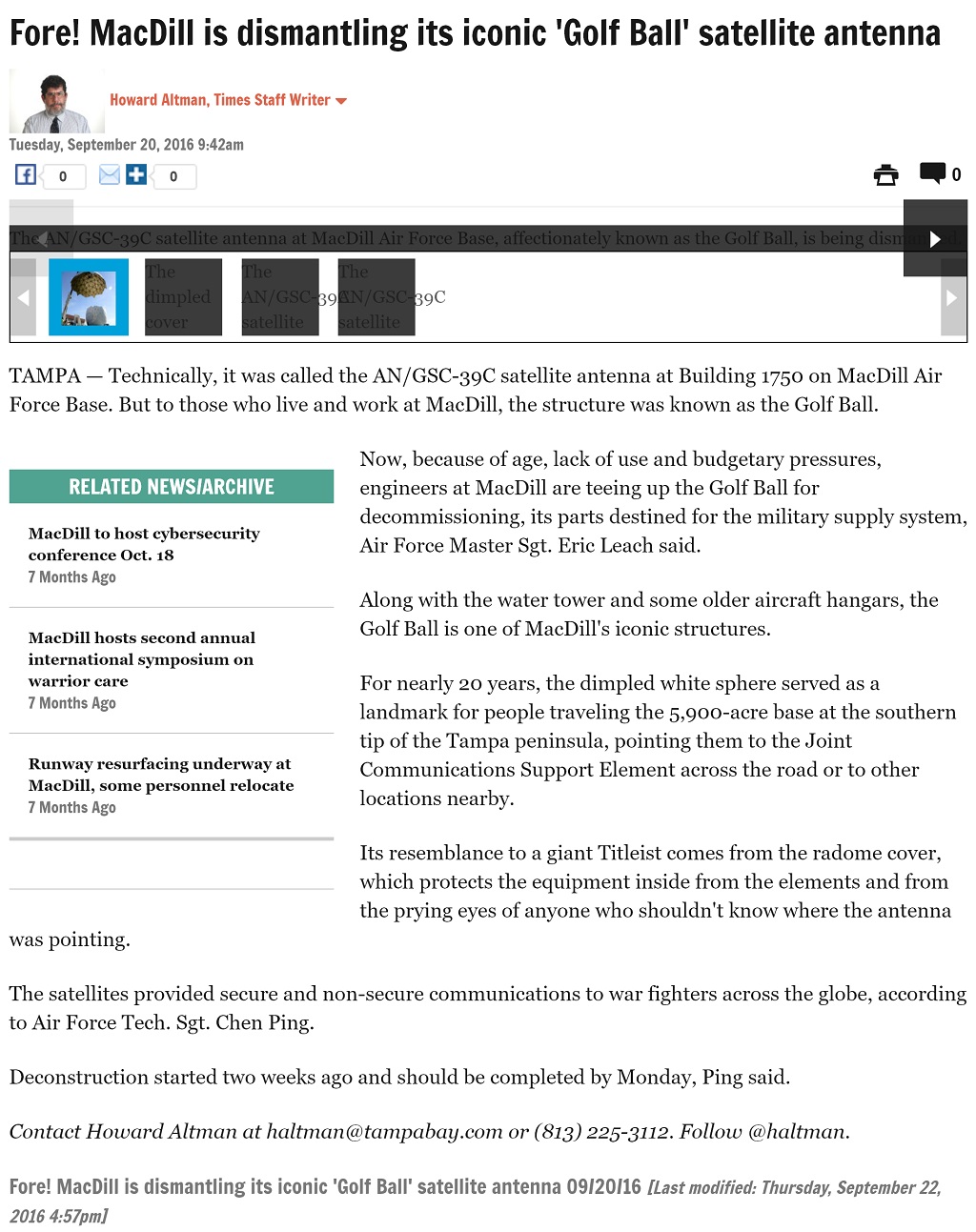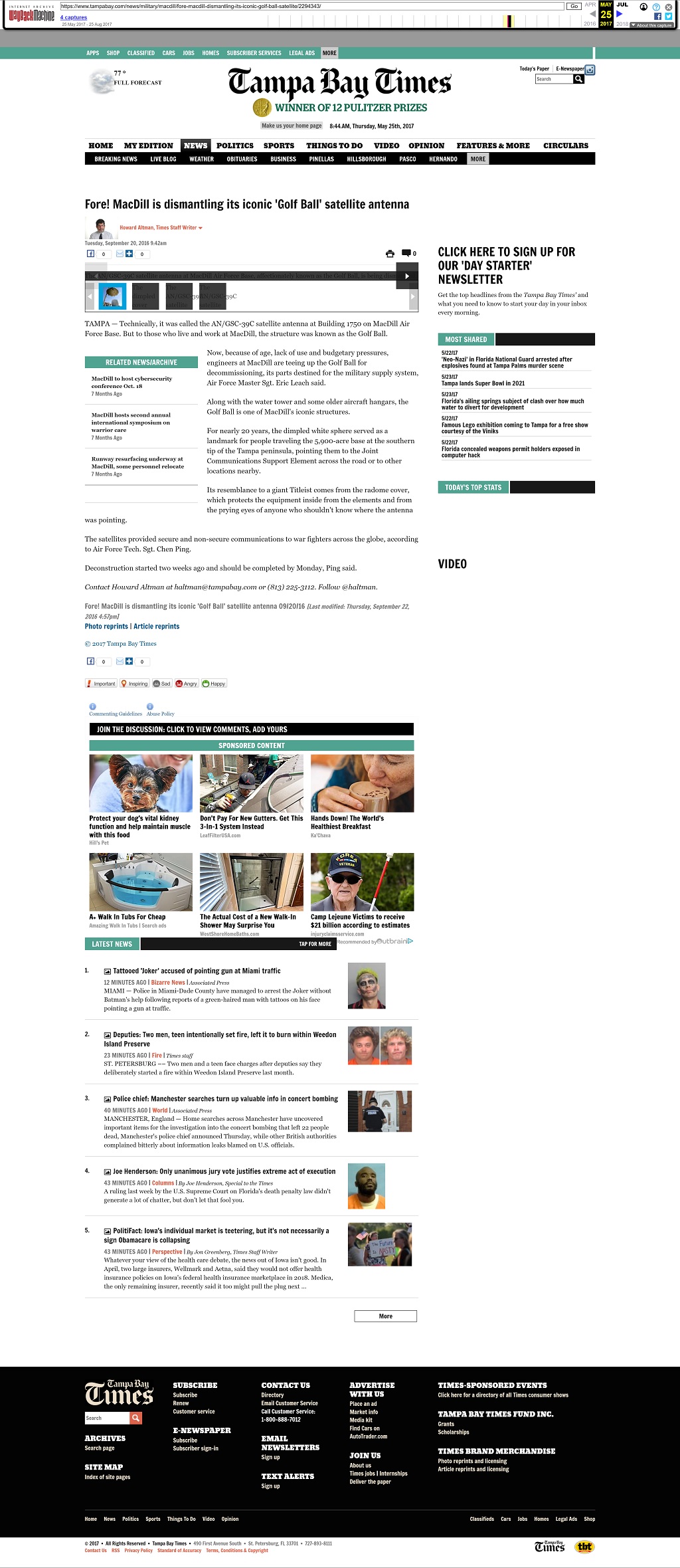
News / Military
By Howard Altman / Tampa Bay Times / September 20, 2016
PHOTO: The AN/GSC-39C satellite antenna at MacDill Air Force Base, affectionately known as the Golf Ball, is being dismantled. (Courtesy of 6th Air Mobility Wing, MacDill Air Force Base)
TAMPA — Technically, it was called the AN/GSC-39C satellite antenna at Building 1750 on MacDill Air Force Base. But to those who live and work at MacDill, the structure was known as the Golf Ball.
Now, because of age, lack of use and budgetary pressures, engineers at MacDill are teeing up the Golf Ball for decommissioning, its parts destined for the military supply system, Air Force Master Sgt. Eric Leach said.
Along with the water tower and some older aircraft hangars, the Golf Ball is one of MacDill’s iconic structures.
For nearly 20 years, the dimpled white sphere served as a landmark for people traveling the 5,900-acre base at the southern tip of the Tampa peninsula, pointing them to the Joint Communications Support Element across the road or to other locations nearby.
Its resemblance to a giant Titleist comes from the radome cover, which protects the equipment inside from the elements and from the prying eyes of anyone who shouldn’t know where the antenna was pointing.
The satellites provided secure and non-secure communications to war fighters across the globe, according to Air Force Tech. Sgt. Chen Ping.
Deconstruction started two weeks ago and should be completed by Monday, Ping said.
- Photo 2: The dimpled cover reminiscent of a golf ball served to protect a satellite antenna. (Courtesy of 6th Air Mobility Wing, MacDill Air Force Base)
- Photo 3, 4: The AN/GSC-39C satellite antenna at MacDill Air Force Base, affectionately known as the Golf Ball, had a dimpled cover that protected the equipment inside from the elements and from the prying eyes of anyone who shouldn’t know where the antenna was pointing. (Courtesy of 6th Air Mobility Wing, MacDill Air Force Base)
Wayback image

